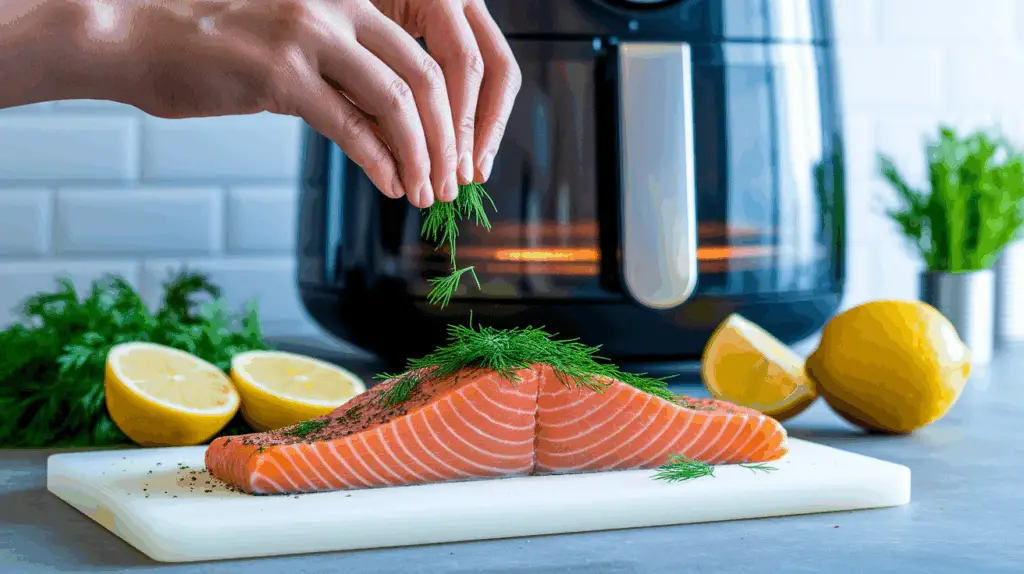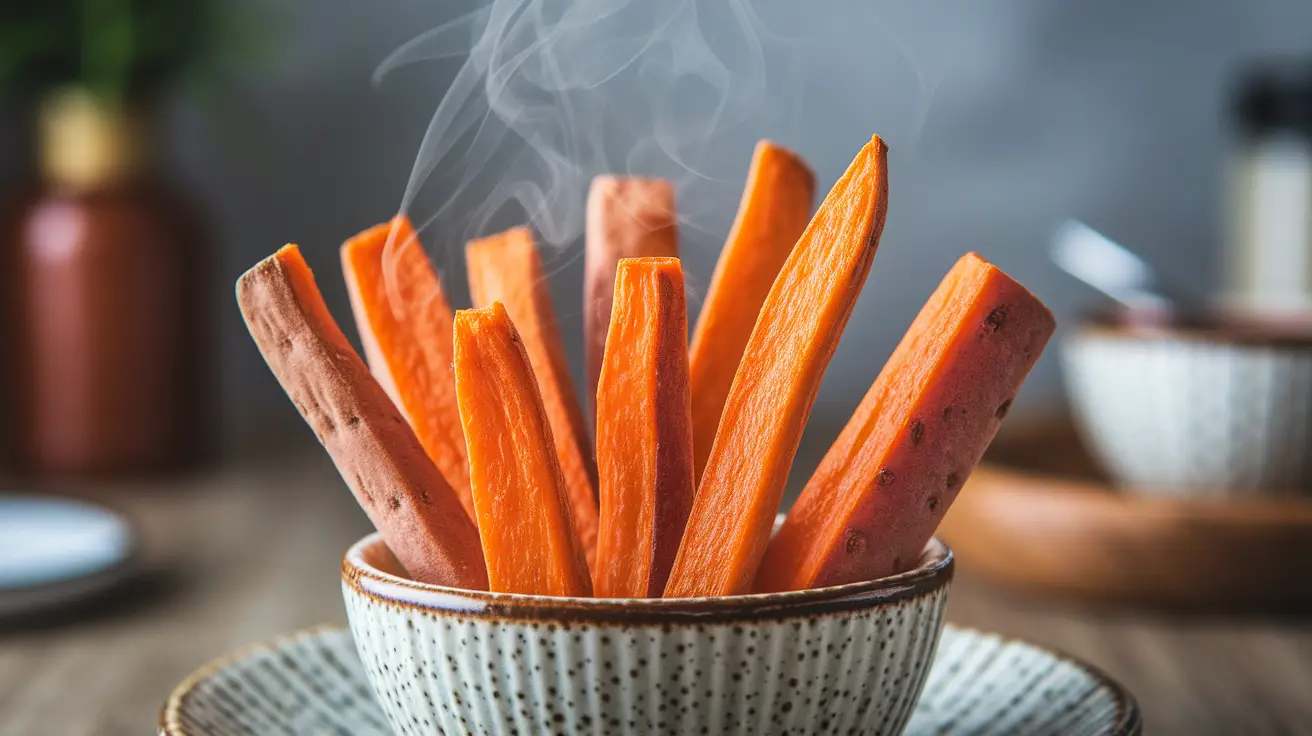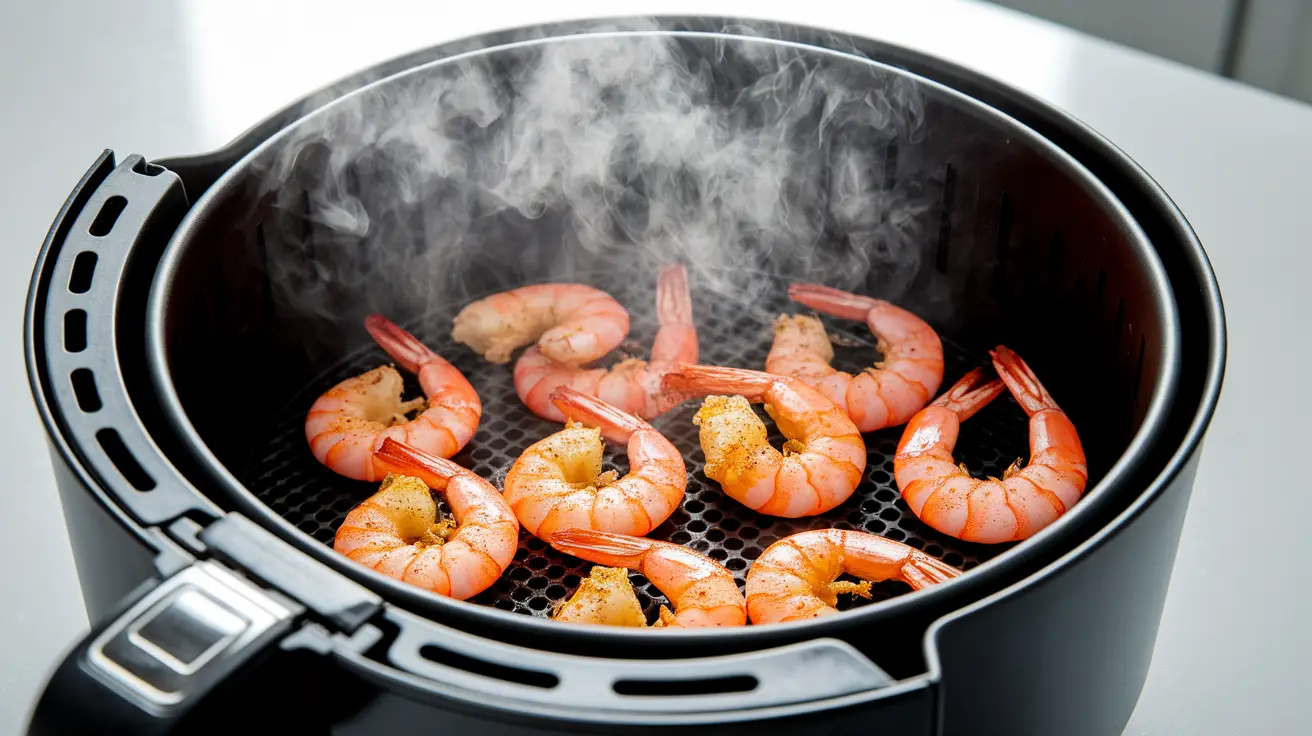Hey there, fellow food adventurer! Have you ever stood in front of the fish counter, eyeing that beautiful salmon, and thought, “Man, I’d love to cook that at home… but how do I get it perfect?” Maybe you’ve tried baking it, pan-searing it, or even grilling, only to end up with something a little less than stellar. Perhaps it’s dry, or the skin is soggy, or it just feels like too much fuss for a weeknight meal. I hear you! For years, I avoided cooking salmon because it felt like a high-stakes culinary gamble. Would it be perfectly flaky, or tragically overcooked and dry? Then, my air fryer came into my life, and honestly, it changed my salmon game forever. If you want to know how to cook salmon in an air fryer so it’s always flaky, juicy, and has that amazing crispy skin (if you like it!), then you’ve absolutely landed in the right place. Get ready to impress yourself!
Air Fryer Salmon: Your New Favorite Way to Cook Fish
Why Air Fry Salmon? The Undeniable Advantages
Why, you ask, should you bother with the air fryer when good ol’ oven-baking exists? Oh, my friend, let me count the ways! The air fryer isn’t just another kitchen gadget; it’s a dedicated appliance for achieving culinary greatness, especially with fish.
Here’s why I swear by it for salmon:
- Unbeatable Crispness: This is the big one for me. The air fryer’s intense, circulating heat hits every angle of your salmon fillet, transforming the skin into a glorious, crackly delight (if you leave it on!). Oven-baked salmon rarely achieves this level of crispness without overcooking the inside.
- Perfectly Flaky Interior: While the outside gets crispy, the inside remains incredibly moist and tender. The air fryer cooks fast and evenly, preventing that dreaded dry, rubbery salmon.
- Speed Demon: Weeknight dinners just got a whole lot faster. Your air fryer preheats in minutes, and most salmon fillets are perfectly cooked in less than 15 minutes. Try doing that in a conventional oven!
- Less Mess, More Fun: Seriously, air frying salmon means minimal oil splattering and easy cleanup. My kitchen used to look like a grease bomb went off after pan-searing salmon. Now? A quick wipe down of the air fryer basket, and I’m done. IMO, that’s a huge win!
- Healthier Option: You use very little oil compared to pan-frying, making it a lighter, healthier way to enjoy your omega-3s.
Choosing Your Salmon: Quality Matters, Friend
Before we get to the magic of the air fryer, let’s talk about the star of the show: your salmon. The quality of your fish makes a huge difference in the final taste and texture. Don’t skimp here!
- Wild-Caught vs. Farm-Raised: This is often a hot topic. Wild-caught salmon (like Sockeye, Coho, or Chinook/King) typically has a deeper color, leaner texture, and more intense flavor. Farm-raised salmon (often Atlantic salmon) usually has a higher fat content, which can make it more forgiving to cook and incredibly buttery. Both work great in the air fryer. I often use farm-raised Atlantic salmon for its consistent fattiness and affordability.
- Freshness Indicators: When buying fresh fillets, look for salmon that is bright, vibrant in color, and has a firm, moist texture. Avoid any fish that looks dull, has brown spots, or smells overly “fishy.” It should smell like the ocean, not like, well, a fish market that’s been open for a week.
- Skin-On vs. Skin-Off: For air frying, I am team skin-on all the way! The skin acts as a natural protective barrier, helping to keep the flesh moist. Plus, when air-fried properly, salmon skin becomes wonderfully crispy. If you prefer skin-off, that’s fine too; just keep a closer eye on it to prevent drying.
- Thickness is Key: Aim for fillets that are roughly 1 to 1.5 inches thick at their thickest point. Thinner tails can cook much faster and dry out, while super thick pieces might take longer. If you have varied thicknesses, consider folding the thinner tail ends under to create a more uniform thickness.
Prepping Your Fillets: The Secret to Success
Even the best salmon won’t shine if you skip some crucial prep steps. This isn’t rocket science, but these small actions make a big difference.
Pat It Dry: A Non-Negotiable Step
This is perhaps the single most important step for achieving crispy skin and a beautiful sear, regardless of your cooking method. Use paper towels to thoroughly pat both sides of your salmon fillets dry. You want to wick away as much moisture as possible. Excess moisture creates steam, and steam is the enemy of crispiness! This is a hill I will die on.
Portioning: Size Up Your Salmon
If you’re buying a large fillet, you’ll want to cut it into individual portions before air frying. Aim for pieces that are roughly 4-6 ounces each. This size cooks evenly and fits well in most air fryer baskets without overcrowding.
Pin Bones: To Remove or Not to Remove?
Some salmon fillets might have tiny, flexible pin bones. You can usually feel them by running your finger along the flesh side. Most grocery stores remove them, but if you find any, use a clean pair of needle-nose pliers or tweezers to gently pull them out at the angle they went in. It’s not strictly necessary for cooking, but nobody enjoys a surprise bone.
Seasoning Your Salmon: Flavor Beyond Basic
Now for the fun part: flavor! Salmon is delicious simply seasoned, but it also takes on other flavors beautifully. Remember, you want your seasoning to stick, so a little oil is usually involved first.
The Oil Factor: Just a Touch is Enough
You don’t need much oil for air frying, but a light coating helps with crisping and seasoning adhesion. I usually brush or spray my fillets with 1-2 teaspoons of olive oil or avocado oil per fillet. Olive oil gives a nice flavor, and avocado oil has a higher smoke point if you’re worried. Don’t drown it in oil!
Simple & Classic: Salt, Pepper, Garlic
You can never go wrong with the basics. This combination lets the natural flavor of the salmon shine.
- Kosher Salt: I always prefer kosher salt for its flaky texture and ability to adhere well.
- Freshly Ground Black Pepper: Essential.
- Garlic Powder: Gives a subtle, aromatic background. (Garlic salt works too, just adjust your other salt accordingly!)
Herbaceous Happiness
Want to brighten things up? Fresh or dried herbs are your friends.
- Dill: The classic pairing for salmon. Fresh dill, chopped, is divine.
- Parsley: Freshly chopped, adds a clean, peppery note.
- Rosemary or Thyme: For a more earthy, robust flavor, particularly with savory rubs.
Bold & Beautiful: Spice Rubs and Marinades
Feeling adventurous? Salmon can handle a surprising amount of flavor.
- Lemon-Dill Rub: Salt, pepper, garlic powder, onion powder, and lots of dried dill (or fresh!). A squeeze of fresh lemon juice after cooking is key.
- Smoky Paprika Rub: Salt, pepper, smoked paprika, a pinch of cayenne (if you like heat), and a touch of brown sugar for balance. This creates a beautiful crust.
- Maple-Dijon Glaze (add halfway through): Whisk together maple syrup, Dijon mustard, a splash of soy sauce, and a little minced garlic. Brush this on during the last few minutes of cooking to prevent burning. FYI, this one is a total crowd-pleaser!
- Marinades: If using a marinade, make sure it’s oil-based or very light. Marinate for no more than 30 minutes, and pat the salmon dry again before air frying to remove excess liquid, which can prevent crisping.
Pro Tip: Once you’ve oiled your salmon, sprinkle your chosen seasonings evenly over both sides. Gently press them onto the flesh to ensure they stick.
Air Fryer Settings: Temperature, Time, and Technique
This is where the magic happens! Getting the right temperature and time is crucial for perfectly cooked, flaky salmon. Every air fryer is a bit different, so consider these guidelines your starting point. You’ll learn your machine’s quirks over time.
Preheat Like a Pro
I can’t stress this enough: always preheat your air fryer! This ensures the salmon starts cooking immediately at the right temperature, leading to a much better sear and crispier result. Preheat your air fryer to 400°F (200°C) for at least 3-5 minutes. Some air fryers have a dedicated preheat setting; if not, just run it at the desired temperature.
Single Layer, Always!
This is another non-negotiable rule of air frying. Do not overcrowd your basket! The air fryer works by circulating hot air around the food. If you stack or overlap your salmon fillets, the air can’t circulate properly, leading to uneven cooking and, worst of all, soggy fish. Cook in batches if you have more than two fillets. Seriously, it’s worth the extra minute.
Skin Up or Skin Down? My Take
If your salmon has skin, you have a choice. I always recommend placing the salmon skin-side up in the air fryer basket. Why? Because the direct heat and intense airflow will crisp up that skin beautifully. If you put it skin-side down, the skin might stick to the basket more easily, and it won’t get as crispy.
The Doneness Test: No Dry Salmon Allowed!
Nobody likes dry salmon. So, how do you know when it’s perfectly done?
- Internal Temperature: For food safety and optimal flakiness, salmon is considered cooked when it reaches an internal temperature of 145°F (63°C). Use an instant-read thermometer inserted into the thickest part of the fillet.
- Flakiness Test: If you don’t have a thermometer (but honestly, you should get one!), insert a fork into the thickest part of the salmon and gently twist. The flesh should flake easily but still look moist and slightly translucent in the very center. It will continue to cook for a minute or two after you remove it from the air fryer, so it’s okay if it’s just a tiny bit under when you pull it out.
Time & Temp Guidelines for Air-Fried Salmon:
- Temperature: 400°F (200°C)
- Time:
- For 1-inch thick fillets: Start with 10-12 minutes.
- For 1.5-inch thick fillets: Start with 12-15 minutes.
Check for doneness around the 8-minute mark for thinner fillets and then every minute or two after that. Remember to adjust based on your specific air fryer model. My current air fryer cooks a little faster than my last one, so I always check earlier just in case! :/
Troubleshooting Common Air Fryer Salmon Woes
Even with the best instructions, sometimes things go a little awry. It happens to the best of us!
- Soggy Skin:
- Solution: You didn’t pat the salmon dry enough, or you overcrowded the basket. Go back to basics: pat dry rigorously and ensure single-layer cooking. A little more oil or a slightly higher temp (like 400°F) can also help.
- Dry Salmon:
- Solution: You overcooked it! Salmon cooks quickly. Next time, reduce the cooking time by a minute or two and check for doneness earlier. Remember that 145°F internal temperature.
- Sticking to the Basket:
- Solution: Did you forget to lightly oil the basket? A quick spray of cooking oil or parchment paper liners made for air fryers (make sure the food weighs them down!) can prevent sticking. Also, don’t try to move the salmon until it’s properly cooked and the skin has released.
Serving Your Air-Fried Salmon Masterpiece
You’ve done it! You’ve successfully air-fried salmon. Now, what to serve with this glorious creation? The possibilities are endless!
- Simple & Fresh: A squeeze of fresh lemon juice over the cooked salmon is a must. A sprinkle of fresh dill or parsley works wonders.
- Sauces & Toppings:
- Creamy dill sauce or a quick yogurt-dill sauce.
- Pesto (homemade or store-bought).
- A simple vinaigrette for a brighter flavor.
- Salsa or a fruit salsa for a fresh, zesty kick.
- Compound butter (butter mixed with herbs, garlic, lemon zest) melting on top.
- Perfect Pairings:
- Roasted asparagus or green beans (you can even air fry these separately!).
- Quinoa, brown rice, or couscous.
- A simple side salad with a light dressing.
- Air-fried sweet potatoes (if you remember how to make those after our last chat!).
Frequently Asked Questions
- How long does it take to cook salmon in an air fryer? It typically takes 10-15 minutes to cook salmon in an air fryer at 400°F (200°C), depending on the thickness of the fillet. Thinner fillets (around 1 inch) will be done in 10-12 minutes, while thicker ones (1.5 inches) might take up to 15 minutes. Always check for an internal temperature of 145°F (63°C).
- Do I need to flip salmon in the air fryer? No, you generally do not need to flip salmon when cooking it in an air fryer. The circulating hot air cooks the fish evenly from all sides. If your salmon has skin, place it skin-side up for the crispiest results.
- What temperature should I air fry salmon at? The ideal temperature for air frying salmon is 400°F (200°C). This high heat helps to achieve a crispy exterior, especially on the skin, while keeping the inside moist and flaky. Always preheat your air fryer to this temperature before adding the salmon.
- How do you keep salmon from sticking to the air fryer? To prevent salmon from sticking to your air fryer basket, you should lightly grease the basket with a spray of cooking oil or a thin brush of olive oil before placing the salmon. You can also use parchment paper liners specifically designed for air fryers, ensuring the salmon (or other food) is heavy enough to hold the liner down during cooking.
- Should I put oil on salmon before air frying? Yes, you should apply a light coating of oil (about 1-2 teaspoons per fillet) to your salmon before air frying. This helps the seasonings stick, promotes crispness, and prevents the fish from drying out or sticking to the basket. Olive oil or avocado oil are good choices.
- How do I know when salmon is done in the air fryer? Salmon is done in the air fryer when it reaches an internal temperature of 145°F (63°C), measured at the thickest part of the fillet with an instant-read thermometer. Alternatively, you can check for doneness by inserting a fork into the thickest part; the flesh should flake easily but still appear moist.
- Can you cook frozen salmon in an air fryer? Yes, you can cook frozen salmon in an air fryer. You will need to cook it at a slightly lower temperature (e.g., 350-375°F or 175-190°C) for a longer period, typically 15-20 minutes or more, depending on thickness. You may need to flip it once halfway through. Ensure you season it partway through or after it has thawed enough.
Conclusion
So there you have it! The definitive guide on how to cook salmon in an air fryer. Say goodbye to dry, lackluster fish and hello to perfectly flaky, juicy fillets with amazing crispy skin. This method is fast, simple, and creates incredible results, making salmon a go-to for any meal. Don’t be intimidated; your air fryer is truly your ally in the kitchen. Go ahead, grab that beautiful fillet, and get ready to cook some amazing salmon. You’ve got this! 🙂




